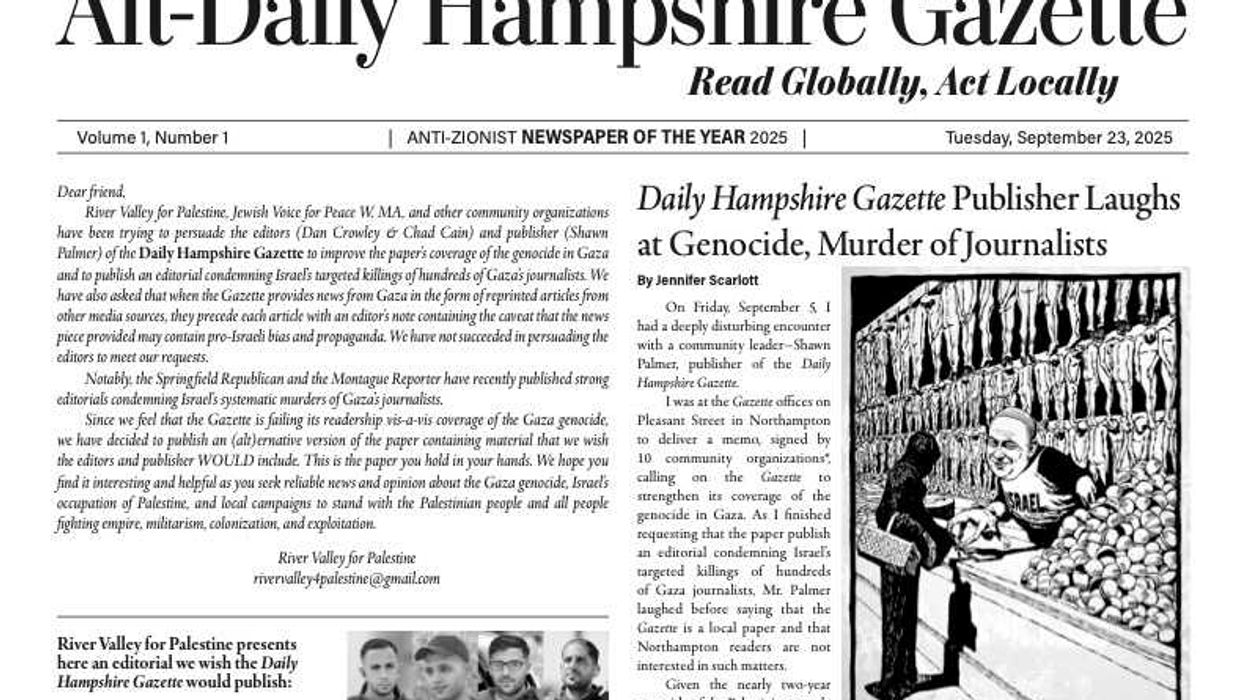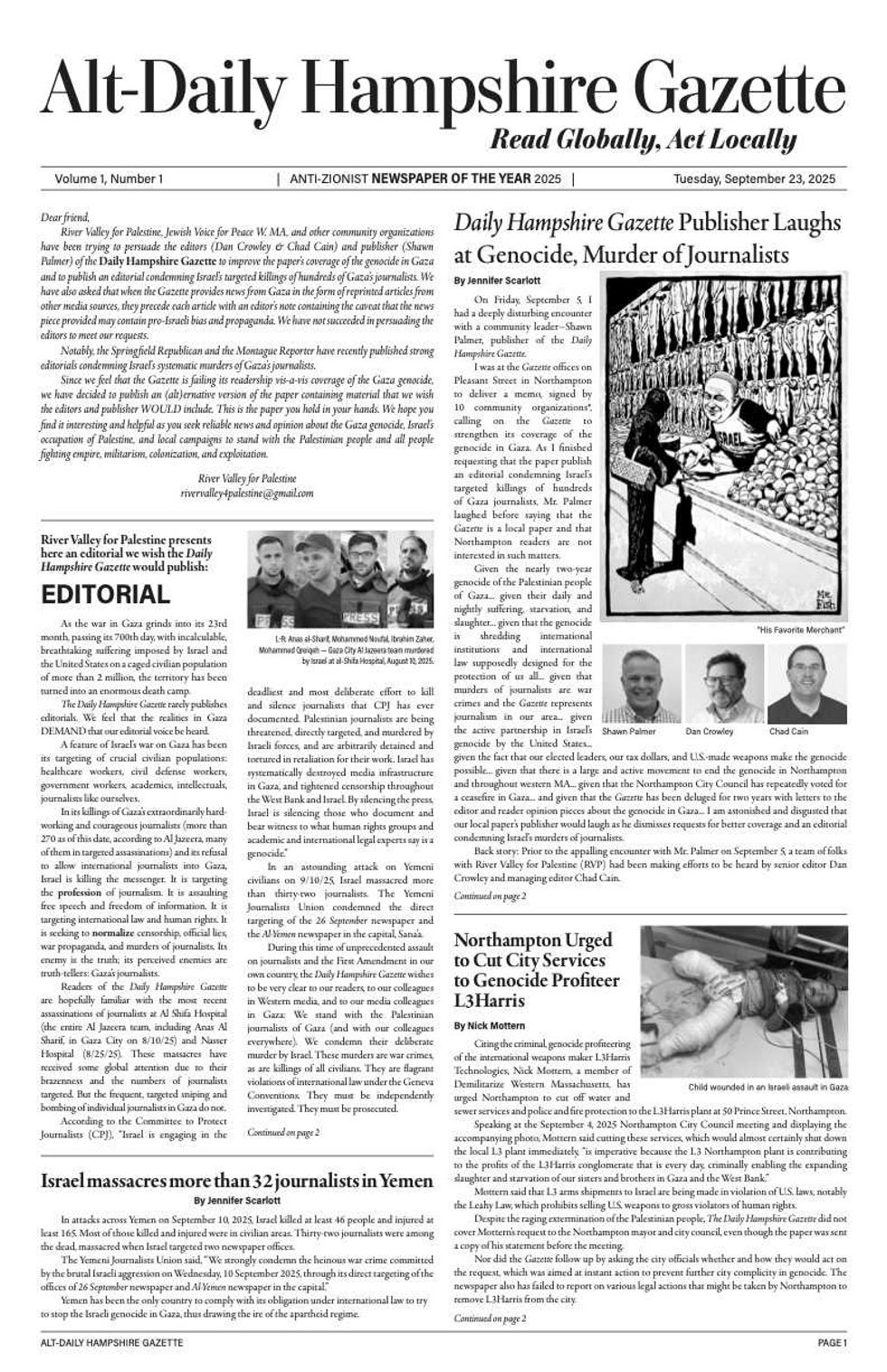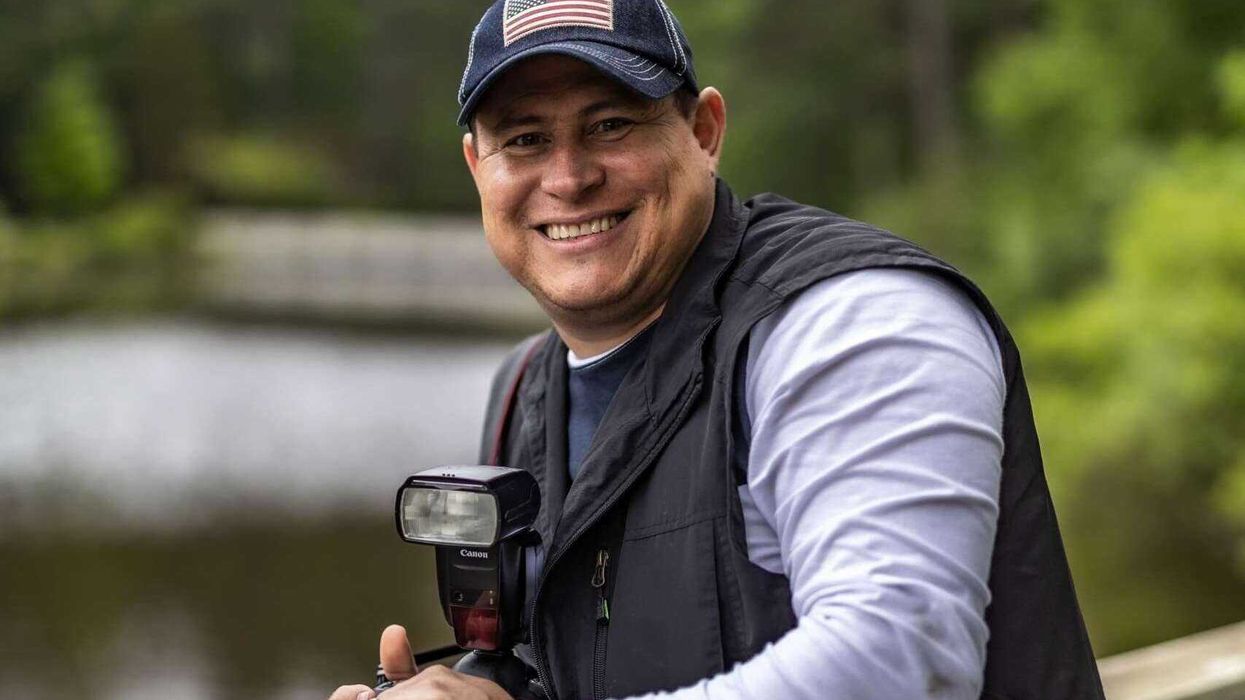Kansas Editor Hopes $3 Million Payout for Police Raids Stops Future Attacks on Press
"In our democracy, the press is a watchdog against abuse," said Marion County Record publisher Eric Meyer. "If the watchdog itself is the target of abuse, and all it does is roll over, democracy suffers.”
A Kansas county has agreed to pay $3 million over 2023 police raids of a local newspaper and multiple homes—one of which belonged to its elderly publisher, whose death shortly followed—sparking nationwide alarm over increasing attacks on the free press.
Marion County agreed to pay the seven-figure settlement and issue a formal apology to the publishers of the Marion County Record admitting that wrongdoing had occurred during the August 11, 2023 raids on the paper's newsroom and two homes.
The apology states that the Marion County Sheriff's Office "wishes to express its sincere regrets to Eric and Joan Meyer and Ruth and Ronald Herbel for its participation in the drafting and execution of the Marion Police Department’s search warrants on their homes and the Marion County Record. This likely would not have happened if established law had been reviewed and applied prior to the execution of the warrant."
Bernie Rhodes, an attorney for the Record, told the paper, "This is a first step—but a big step—in making sure that Joan Meyer’s death served a purpose, in making sure that the next crazed cop who thinks they can raid a newsroom understands the consequences are measured in millions of dollars."
Rhodes was referring to the 98-year-old Record co-owner, who was reportedly in good health for her age, but collapsed and died at her home in the immediate aftermath of the raid by Marion police and country sheriff's deputies.
"This is a first step—but a big step—in making sure that Joan Meyer’s death served a purpose."
Eric Meyer, Joan Meyer's son and the current publisher of the Record, said: “The admission of wrongdoing is the most important part. In our democracy, the press is a watchdog against abuse. If the watchdog itself is the target of abuse, and all it does is roll over, democracy suffers.”
According to the Record, awards include:
- $200,000 to Eric Meyer, whose home was raided and two computers and a cellphone seized;
- $250,000 to reporter Deb Gruver, whose cell phone was seized;
- $300,000 to the Record;
- $600,000 to reporter Phyllis Zorn, whose cell phone was seized;
- $650,000 to former vice mayor Ruth Herbel, whose computer and cell phone were seized, and her husband, Ron, whose dementia was aggravated by the raid on their home; and
- $1 million to the estate of Joan Meyer.
Record business manager Cheri Bentz—who suffered aggravation of health conditions following one of the raids—previously settled with the county for $50,000.
Katherine Jacobsen, the US, Canada, and Caribbean program coordinator at the Committee to Protect Journalists, hailed the settlement as "an important win for press freedom amid a growing trend of hostility toward those who hold power to account."
"Journalists must be able to work freely and without fear of having their homes raided and equipment seized due to the overreach of authorities," she added.
The raids—during which police seized the Record‘s electronic equipment, work product, and documentary materials—were conducted with search warrants related to an alleged identity theft investigation.
However, critics—who have called the warrants falsified and invalid—noted that the raids came as the Record investigated sexual misconduct allegations against then-Marion Police Chief Police Gideon Cody. The raids, they say, were motivated by Cody's desire to silence the paper's unfavorable reporting about him.
State District Judge Ryan Rosauer ruled last month that Cody likely committed a felony crime when he instructed a witness with whom he allegedly had an improper romantic relationship to delete text messages they exchanged before, during, and after the raids.
While Cody will not be tried in connection with Meyer's death or the 2023 raids, Rosauer ordered him to stand trial over the deleted texts.
Meyer at the time expressed dismay that Cody wasn't being tried for his mother's death or the raids. He also worried that Cody was being made a scapegoat, as other people and law enforcement agencies were involved in the incident.
Following the announcement of the settlement, Meyer said that "this never has been about money, the key issue always has been that no one is above the law."
"No one can trample on the First and Fourth Amendments for personal or political purposes and get away with it," he continued. "When my mother warned officers that the stress they were putting her under might lead to her death, she called what they were doing Hitler tactics."
"What keeps our democracy from descending as Germany did before World War II is the courage she demonstrated—and we’ve tried to continue—in fighting back," Meyer added.
"This never has been about money, the key issue always has been that no one is above the law."
Five consolidated federal civil rights lawsuits have been filed in the US District Court for the District of Kansas, alleging wrongful death, unlawful searches, retaliation for protected speech, and other claims tied to the raids.
“It’s a shame additional criminal charges aren’t possible,” Meyer said, “but the federal civil cases will do everything they can to discourage future abuses of power.”
Although unable to savor the Record's victory, Joan Meyer presciently told the officers raiding her home, "Boy, are you going to be in trouble."
“She was so right," said Rhodes.



